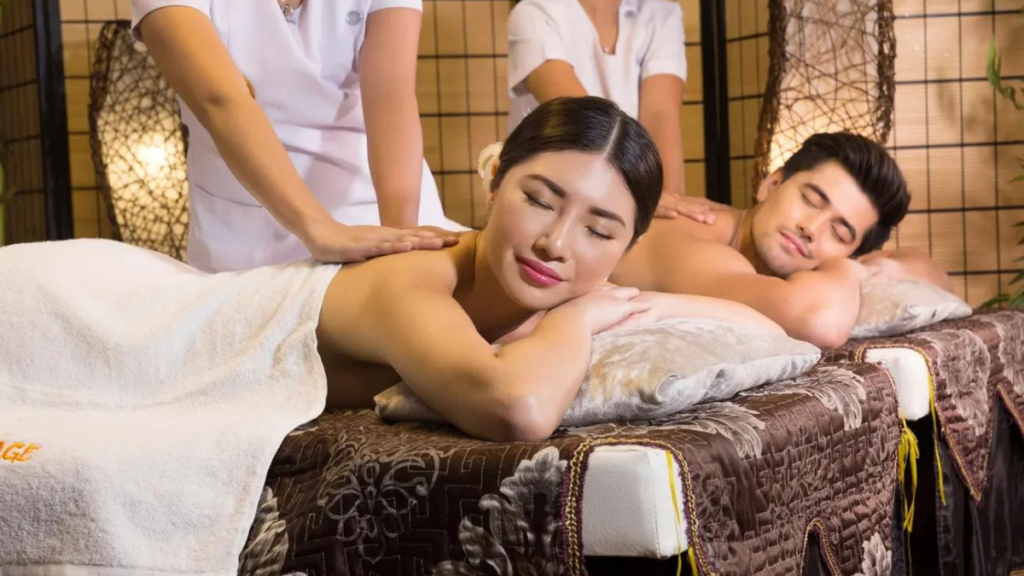Asian massage, originating from ancient healing traditions, is a popular global practice for its therapeutic benefits and holistic approach to wellness. Originating from Chinese, Thai, Japanese, and Ayurvedic cultures, these massages focus on the body’s energy flow and balance. Key techniques include acupressure points, stretching, and joint mobilization, which aim to release tension, improve energy flow, and address health issues. Benefits of Asian massag’e include stress relief, pain relief, improved circulation, enhanced flexibility, and balanced energy flow. The ancient wisdom embedded in these massage traditions continues to provide a pathway to optimal health and harmony, making it a valuable alternative to traditional therapies.
Historical Roots of Asian Massage
Asian massage has a rich history that dates back thousands of years. Ancient texts from China, India, and other Asian civilizations document the use of massage as a healing practice. In traditional Chinese medicine, the concept of Qi, or life force energy, is central to understanding the body’s balance. Similarly, Ayurveda, the traditional medicine of India, emphasizes the balance of three doshas—Vata, Pitta, and Kapha—to maintain optimal health. The techniques developed in these cultures have evolved over time, leading to a variety of Asian massag’e styles.
Different Styles of Asian Massage
Chinese Tui Na Massage
Tui Na, a form of Chinese massage, focuses on the manipulation of the body’s energy channels, or meridians. Practitioners use techniques such as kneading, rolling, and acupressure to stimulate the flow of Qi and restore balance. Tui Na is often used to address specific health concerns and is considered a therapeutic massage.
Thai Massage: The Art of Passive Yoga
Originating from Thailand, Thai massage combines acupressure, stretching, and assisted yoga postures. The recipient is guided through a series of passive yoga stretches, promoting flexibility, improved circulation, and energy flow. Thai massage is often performed on a floor mat, and both the giver and receiver wear comfortable clothing.
Japanese Shiatsu Massage
Shiatsu, a Japanese massage technique, involves applying pressure to specific points on the body to balance the flow of energy. The practitioner uses fingers, palms, and thumbs to target these points, promoting relaxation and overall well-being. Shiatsu is based on the principles of traditional Chinese medicine but has developed its own unique style over time.
Key Techniques in Asian Massage
Acupressure Points
Many Asian massag’e styles, including Tui Na and Shiatsu, incorporate the use of acupressure points. These points are believed to correspond to specific organs and systems in the body. By applying pressure to these points, practitioners aim to release tension, improve energy flow, and address various health issues.
Stretching and Joint Mobilization
Unlike some Western massage styles that focus primarily on muscle manipulation, Asian massages often involve stretching and joint mobilization. Thai massage, in particular, is renowned for its emphasis on passive stretching, promoting flexibility and easing muscle tension.
Energy Balancing
A fundamental principle in Asian massage is the belief in the body’s energy pathways. By manipulating these pathways, practitioners aim to balance the body’s energy, promoting physical and mental well-being. This holistic approach considers the interconnectedness of the body, mind, and spirit.
Benefits of Asian Massage
Stress Relief and Relaxation
One of the primary benefits of Asian massage is its ability to induce deep relaxation and alleviate stress. The combination of rhythmic movements, pressure points, and energy balancing helps the recipient enter a state of profound relaxation, promoting mental clarity and emotional well-being.
Pain Relief and Improved Circulation
Asian massage techniques target areas of tension and discomfort, providing relief from chronic pain conditions. The stimulation of acupressure points and the promotion of blood circulation contribute to reduced muscle stiffness, increased joint mobility, and an overall sense of physical well-being.
Enhanced Flexibility and Range of Motion
The stretching and joint mobilization techniques employed in Asian massages, particularly Thai massage, contribute to improved flexibility and increased range of motion. This is beneficial for individuals dealing with stiffness or recovering from injuries.
Balanced Energy Flow
Asian massage aims to balance the body’s energy flow, addressing imbalances that may contribute to various health issues. By harmonizing the flow of Qi or prana, these massages promote a sense of vitality and overall equilibrium.
Conclusion: Embracing Holistic Wellness Through Asian Massage
Asian massage, with its deep historical roots and diverse techniques, offers a holistic approach to wellness that extends beyond the physical realm. From stress relief and pain management to improved flexibility and energy balance, the benefits of Asian massage are numerous. As individuals seek alternative and complementary therapies for their well-being, the ancient wisdom embedded in these massage traditions continues to provide a pathway to optimal health and harmony. Whether one chooses Tui Na, Thai massage, or Shiatsu, the journey towards holistic wellness through Asian massage is a testament to the enduring power of ancient healing practices in the modern world.







